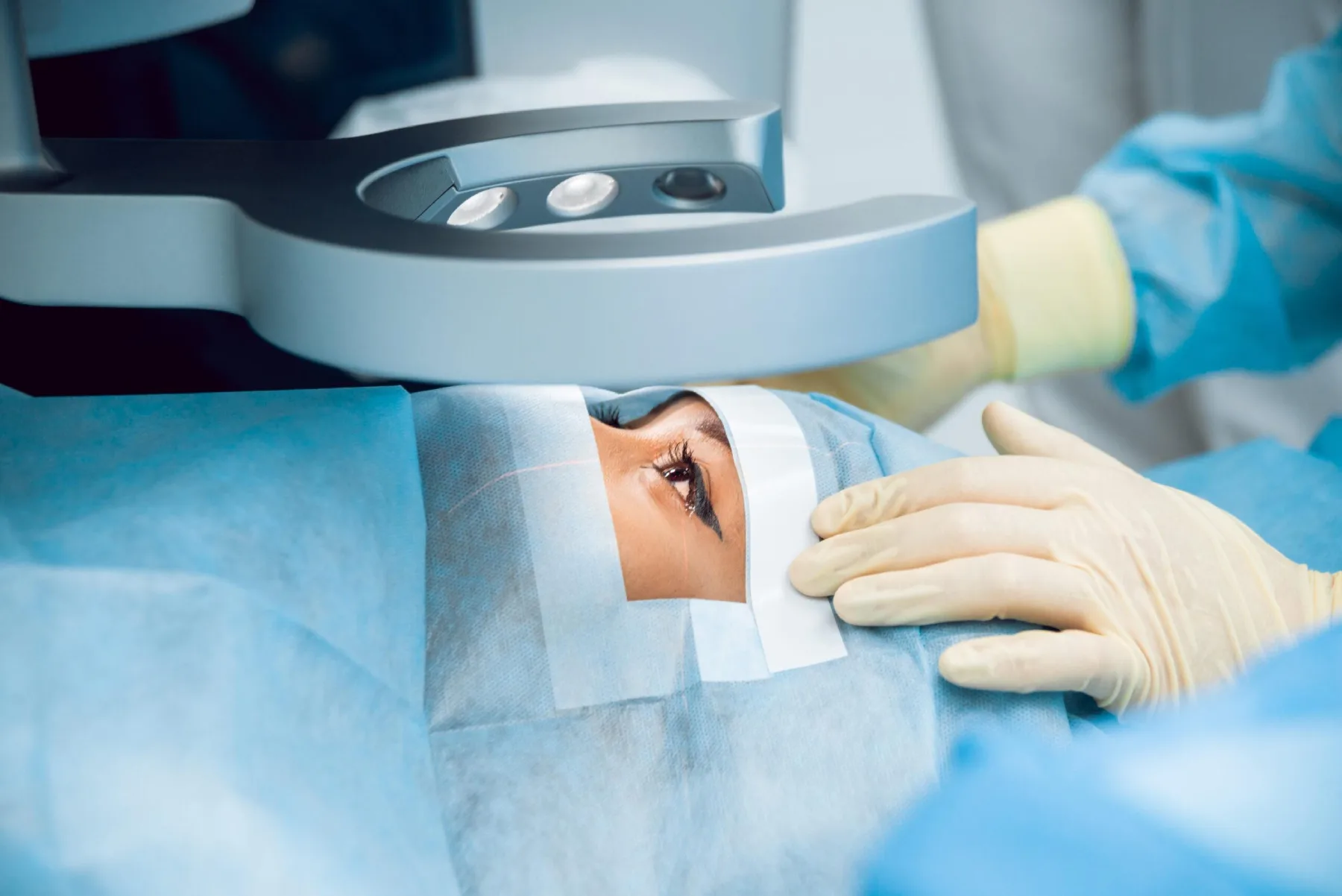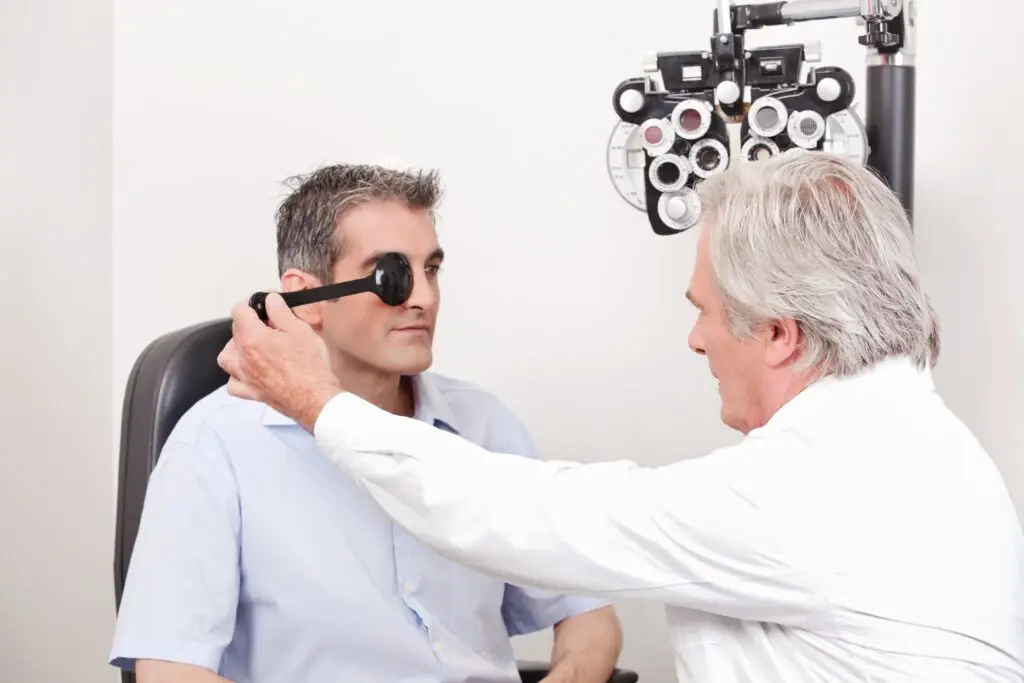As the seconds on a clock tick away, so does our age, bringing inevitable changes to our bodies. One such change, often marked by the need to hold a book a bit further away to read clearly, is presbyopia – a normal part of aging that can alter the sharpness of our close-up vision. While reading glasses might have been the classic fix, modern science offers a more enduring solution: Laser eye surgery. But with several procedures available, which laser eye surgery stands out as the best for presbyopia? Let’s find out!
Contents
What Is Presbyopia?
 Presbyopia is a natural consequence of the aging process, predominantly affecting individuals aged 40 and above. This vision condition is characterized by a gradual loss of the eyes’ ability to focus on near objects. The culprits behind presbyopia are the natural lens inside our eyes and the muscles that control it. Over time, these lenses harden, and the muscles weaken, thereby limiting the eyes’ ability to adjust and focus on objects up close.
Presbyopia is a natural consequence of the aging process, predominantly affecting individuals aged 40 and above. This vision condition is characterized by a gradual loss of the eyes’ ability to focus on near objects. The culprits behind presbyopia are the natural lens inside our eyes and the muscles that control it. Over time, these lenses harden, and the muscles weaken, thereby limiting the eyes’ ability to adjust and focus on objects up close.
Even though the concept of presbyopia might seem daunting to you, take comfort in knowing it’s a common aging-associated occurrence. Fortunately, modern medicine provides us with several effective treatments, including remarkable advancements in laser eye surgery.
Can Presbyopia Be Corrected With Laser Eye Surgery?
Yes, presbyopia can be effectively addressed with laser eye surgery. These cutting-edge procedures aim to modify the shape of the cornea, the eye’s clear, dome-shaped surface. By precisely altering the cornea’s curvature, the path of the light entering the eye can be adjusted, thus enhancing the focus and mitigating the effects of presbyopia.
Moreover, these surgeries often adopt a strategy called monovision, where one eye is corrected for distance vision and the other for near vision. This approach allows a balance of near and far vision across both eyes, which can significantly reduce the dependence on corrective eyewear for people with presbyopia.
Types of Laser Eye Surgery Used for Presbyopia

Laser eye surgeries have transformed the landscape of vision correction, providing a remarkable solution for conditions like presbyopia. Here, we outline the three primary types of laser eye surgeries employed for presbyopia treatment:
LASIK (Laser-Assisted in Situ Keratomileusis)
LASIK is one of the most frequently performed laser eye surgeries worldwide. It involves creating a thin flap on the cornea’s surface, and using an excimer laser to reshape the cornea. The flap is then repositioned, healing naturally over time. For presbyopia, LASIK can employ a monovision approach, correcting one eye for distance and the other for near vision.
PRK (Photorefractive Keratectomy)
PRK predates LASIK and serves as a suitable alternative, especially for those with thin corneas. Unlike LASIK, PRK does not create a corneal flap. Instead, it removes the outermost layer of the cornea (the epithelium) to expose the area for the laser to reshape the underlying corneal tissue. The epithelium naturally regrows over time post-procedure. Like LASIK, PRK can also adopt the monovision technique for presbyopia correction.
LASEK (Laser-Assisted Subepithelial Keratomileusis)
LASEK is a hybrid procedure that combines elements of both LASIK and PRK. It creates a thin flap from the epithelium, rather than the deeper corneal layers as in LASIK. After lifting the flap, the cornea is reshaped with a laser, and the epithelial flap is replaced. LASEK can be particularly suitable for individuals with thin corneas, dry eyes, or those involved in contact sports. Similar to the other procedures, LASEK can implement the monovision strategy for presbyopia.
What Is The Best Laser Treatment For Presbyopia?
Determining the “best” laser treatment for presbyopia isn’t a one-size-fits-all answer, as it largely depends on an individual’s unique eye condition and lifestyle. However, LASIK (Laser-Assisted in Situ Keratomileusis) has proven to be a popular choice among many patients due to its effectiveness, minimal discomfort, and quick recovery time.
In LASIK, the surgeon creates a thin flap in the cornea and lifts it to expose the underlying corneal tissue. A specialized laser then reshapes this tissue. After the treatment, the surgeon repositions the flap on the eye, where it adheres naturally without stitches.
When it comes to presbyopia, LASIK can incorporate a technique called monovision. In monovision LASIK, the surgeon corrects one eye (typically the dominant one) fully for distance vision, leaving the other slightly nearsighted. This configuration allows one eye to see distant objects clearly while the other eye focuses on near tasks. The brain quickly learns to favor one eye or the other for different visual tasks.
Which Lens Is Used to Remove Presbyopia?
In addition to laser eye surgery, another method to correct presbyopia involves the use of intraocular lenses (IOLs), particularly in a procedure known as refractive lens exchange (RLE) or clear lens extraction.
The three types of IOLs used to address presbyopia are:
- Multifocal IOLs – Multifocal IOLs, much like bifocal glasses, provide multiple focal points, allowing for both near and distant vision. These lenses work by dividing the light entering the eye into multiple focus points, based on the distance of the object. However, it might take some time for the brain to adjust to this new method of visual perception.
- Accommodating IOLs – Accommodating IOLs aim to mimic the eye’s natural process of accommodation – the ability to shift focus between near and distant objects. Designed to mimic the natural lens, accommodating IOLs move or change shape, ensuring a range of clear vision.
- Extended Depth of Focus (EDOF) IOLs – EDOF IOLs provide a continuous range of high-quality vision for far, intermediate, and near distances, with reduced incidence of halos and glare. These lenses aim to extend the range of clear vision and are an innovative solution to presbyopia.
How Much Does Presbyopia Surgery Cost in India?
Laser eye surgery for presbyopia is an investment in your vision, offering the potential to lead a life less dependent on glasses or contact lenses. However, the cost of the surgery can vary significantly, depending on several factors, including the type of laser surgery, the technology used, the surgeon’s expertise, and the care provided during pre and post-operative stages.
The average cost of laser eye surgery for presbyopia in India can range from ₹30,000 to ₹75,000 per eye for LASIK, PRK, or LASEK procedures.
Conclusion
Presbyopia is a natural part of the aging process that can impact the quality of your near vision, potentially altering the way you engage with your surroundings. While glasses and contact lenses were the traditional solutions, advancements in medical technology have ushered in a new era of possibilities for presbyopia correction.
In this modern era, laser eye surgeries such as LASIK, PRK, and LASEK, together with lens replacement procedures, are transforming the landscape of vision correction. These breakthrough treatments have the potential to liberate you from the constant reliance on reading glasses, enabling you to experience your world with clear, sharp vision.
Lasik surgery is a safe 10 minute procedure to help you get rid of glasses. EyeMantra offers the most advanced lasik options including PRK, Femto Lasik, SMILE surgery, Standard lasik, ICL and Contoura vision. If you have any questions on Lasik surgery in Delhi, Lasik surgery cost and Lasik procedure, call us at 9711116605 or email at [email protected].


